|
City of Lincoln offers tour of
newly refurbished Water Testing Laboratory at the waste treatment
plant
 Send a link to a friend
Send a link to a friend
 [November 07, 2022] [November 07, 2022]
On Saturday, October 29th an open house was held at
the newly refurbished water testing laboratory at the city of
Lincoln Waste Treat Plant. The laboratory building is the original
structure built in 1936. On the outside the building remains much
the same as it was the day it opened. But inside, the building has
been completely redone with many new fixtures, reassigned spaces and
an updated water testing lab.
The refurbishment of the building is just one portion of the
complete overhaul job at the waste treatment plant as mandated by
the Illinois Environmental Protection Agency.
The city of Lincoln owns the waste treatment facility and is solely
responsible for the costs incurred for the upgrades. The treatment
facility is managed by a team employed by Veolia North America.
While Veolia is a large company that works in the waste management
business in many communities, some of the people working there are
local to Lincoln and Logan County.
Andrew Bowns is the project manager at the treatment plant. He is no
stranger to Lincoln, being the son of Cince Bown and grandson of the
late Buzz Busby who was an alderman for the city of Lincoln for many
years. In the water testing area, Sam Bailey is doing a lot of the
testing. Still an employee of Veolia, he is a Mount Pulaski native.
In 2011 Lincoln Daily News was given a complete tour of the facility
which was at that time managed by American Water with Bob Tackett as
the project manager for the company. Having the opportunity to view
and photograph components of the laboratory helped to show the
differences between today and 11 years ago, before the project was
started.
Among the biggest and best difference is the actual lab within the
building.
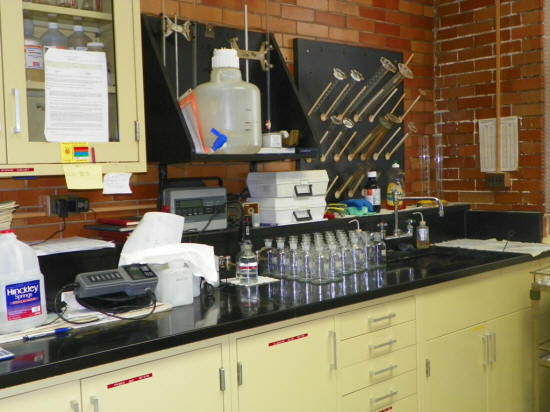
In 2011, the laboratory was small and cramped. At the 2022 tour,
Bowns pointed out that with the reconfiguring of the floor plan
inside the lab building, the testing lab was relocated. In 2011 and
prior, the testing room occupied the space that is now the men’s
bathroom.

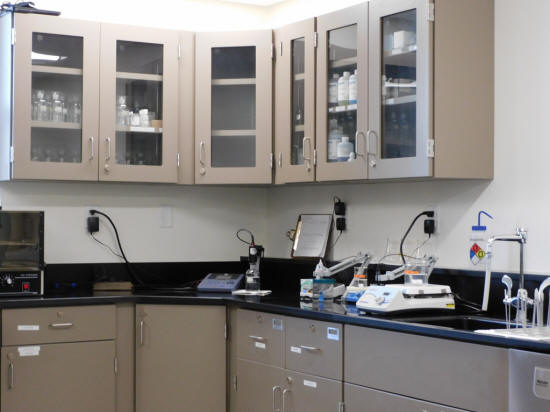

The new testing room is larger and laid out for a more streamline
movement from one test to another, utilizing new equipment under
climate-controlled situations. Bowns explained that previously the
entire building was cooled by window unit air conditioning. The new
building has a central heating and cooling system, making it easier
to maintain proper temperatures in the testing area.
The front entry room of the lab is also refreshed. When visiting the
lab in 2011 the front area was filled with miscellaneous items
including a break area, electrical connections and storage lockers.
In the new remodel that front area is mostly an employee area with a
cabinetry and counter space, plenty of storage and access to the men
and women’s restrooms. The one thing that remains much the same as
the original is the ceiling.
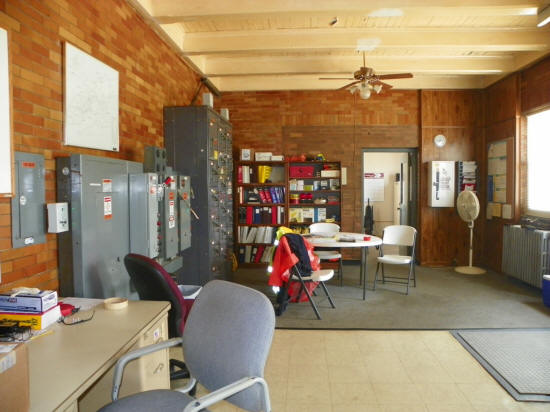
In that room in 2011 the wood ceiling was fully exposed but covered
with paint. As the work in the laboratory building ensued, the
ceilings were stripped of the paint and the original wood was
exposed and found to be in good condition. The city council was then
approached about keeping the ceiling as is for its historical
significance and the attractiveness of it.
The room today with its nice clean finishes has that wood beam
ceiling exposed and it does add to the attractiveness of the overall
room.
[to top of second column] |

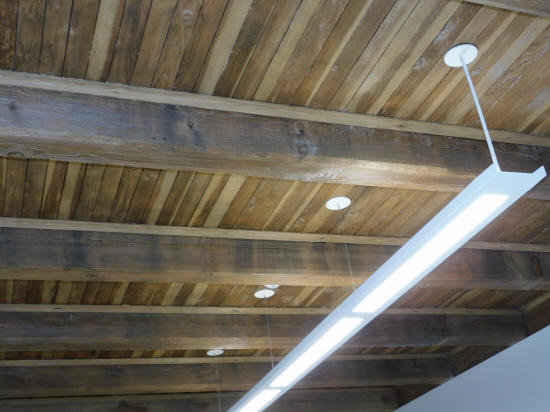
On Saturday, there was a small group
gathered at the waste treatment plant to take the tour. City
Aldermen and City Clerk Kevin and Peggy Bateman had gone through the
building and were outside enjoying the warm day and chatting with
former alderman Ron Keller.
Inside the building, Alderwoman Wanda
Lee Rohlfs was taking the tour, and hearing from Bown and Bailey
about the work conducted in the testing lab.
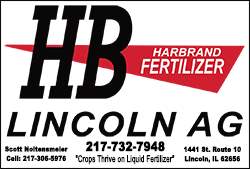


Bowns spoke about the improvements on the climate control with the
new central heating and cooling while Bailey shared details about
the testing he does in the lab on a regular basis.
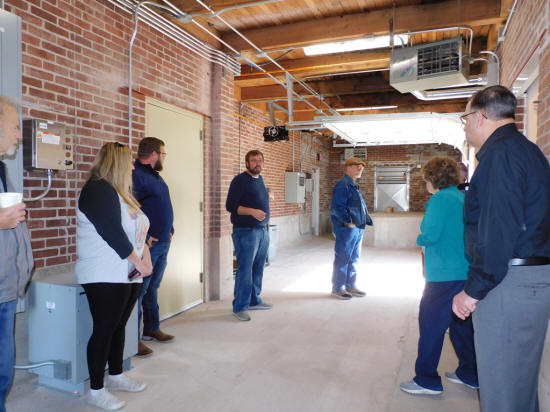
After hearing about the new lab and the equipment that resides
there, the group moved out to the back area of the building. Joining
the tour was Mayor Tracy Welch with wife Annette and Treasurer Chuck
Conzo. In the back of the building much of the original structure
has been preserved. Bowns explained the purpose of the back section
and noted that previously the area had a trench in the middle that
ran through the building as part of the treatment and testing
process. That area has been filled in and the room is used primarily
for storage now.
As the tour was winding down, Welch shared his opinion on the work
that has been done at the waste treatment plant in general and the
lab specifically, “We took the approach on everything out here that
if we were going to do it, let’s do it right. So, we invested and
borrowed more money on a lot of things because we wanted to leave it
for 20 or 30 years for the next people. As you know, our
administration has cleaned up a lot of 20-year-old messes.”
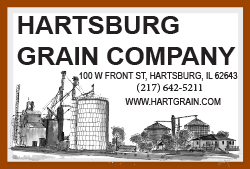
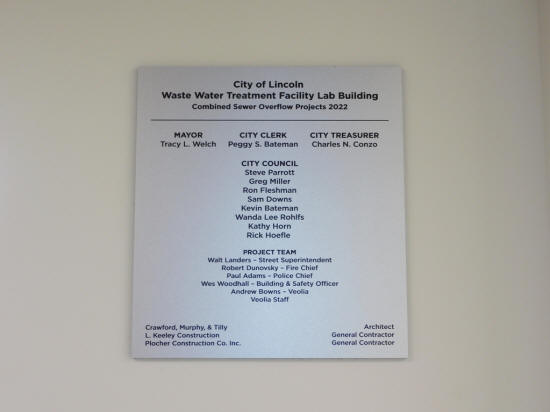
The final attraction in the building is found as one prepares to
exit. A plaque hangs on the wall giving credit to those who have
been instrumental in the process from Mayor Welch to Conzo, Peggy
Batman, the sitting aldermen at the time when critical decisions
were made, the city department heads who were involved, the
architectural firm for the project, and the general contractors.
The laboratory building is just one of the many improvements that
have been made at the waste treatment plant. For the most part the
improvements are structural components of waste treatment,
functional and up to date but not particularly beautiful. The
laboratory building is the exception. Looking at the structure from
the outside, the historical significance remains intact while the
interior is fresh, new, modern, and more accommodating to the work
that must be done inside.
[Nila Smith] |